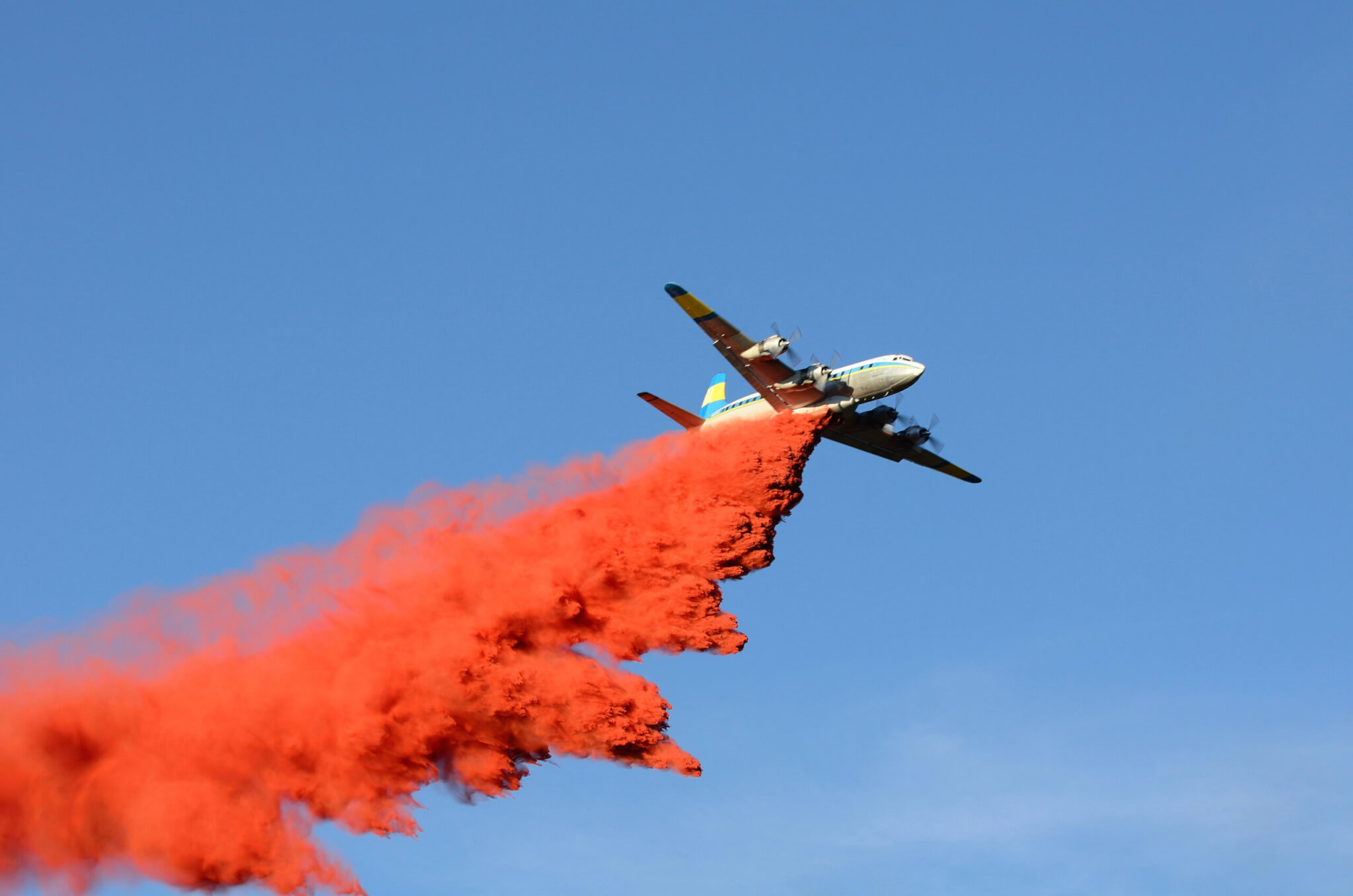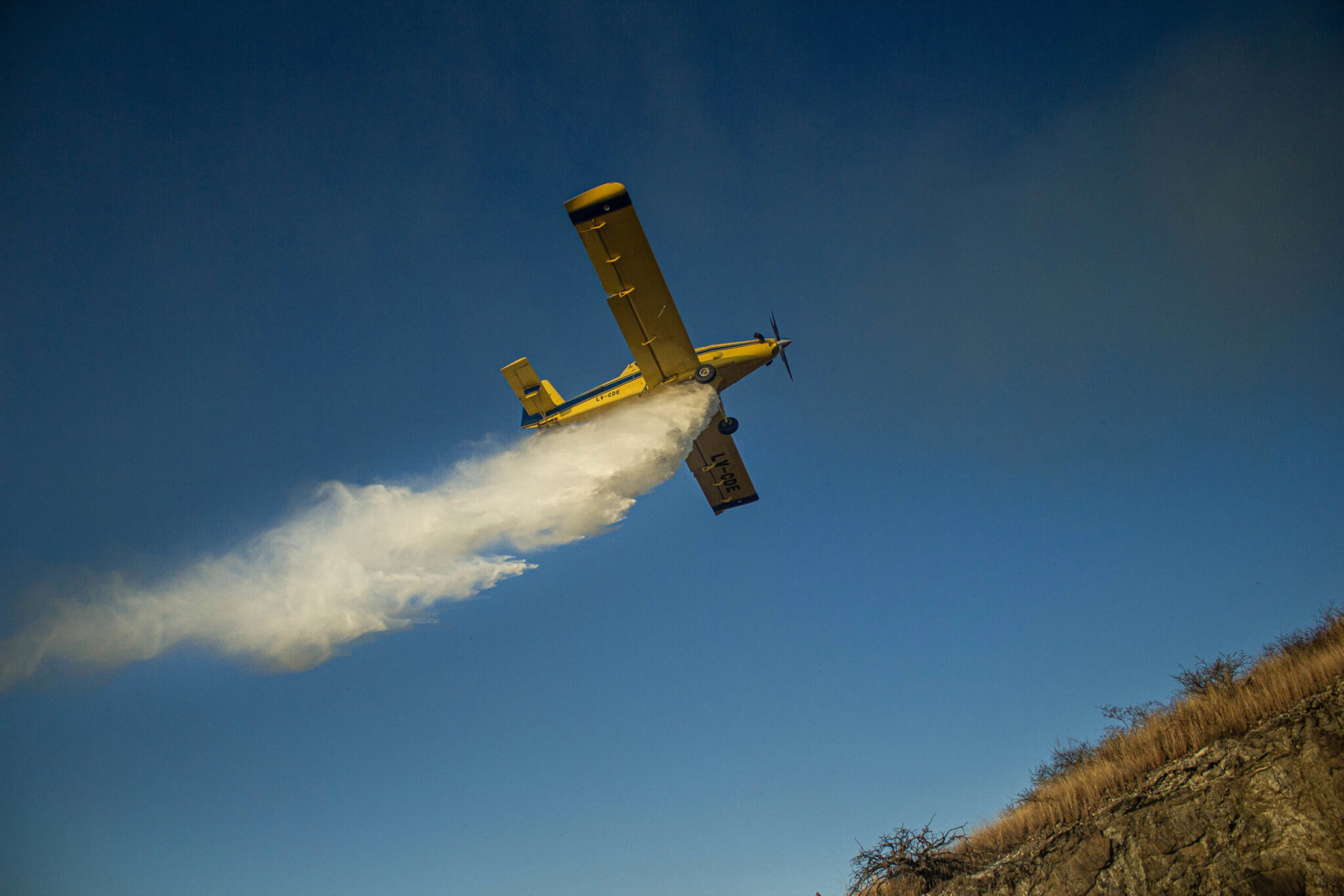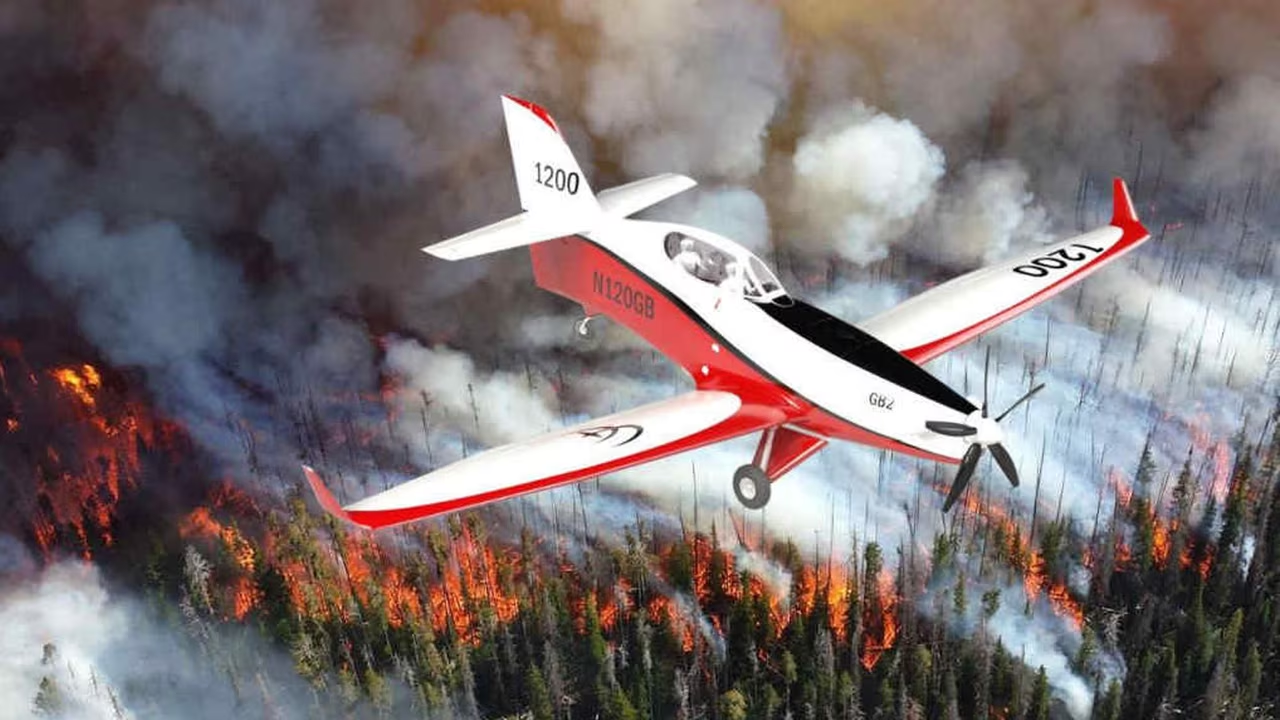A Brief History of Firefighting Aircraft
The history of firefighting aircraft dates back to the early 20th century. The first aerial firefighting mission occurred in 1924 when the U.S. Forest Service used a small plane to drop fire retardant over a blaze in California. This was the beginning of a new era in firefighting, and over the decades, aircraft technology advanced to meet the growing demands of wildfire suppression.
 By the 1940s and 1950s, the use of aircraft to fight fires became more prevalent. In these decades, planes like the C-130 Hercules and DC-7 began serving as Large Air Tankers (LATs), capable of carrying vast amounts of retardant and dropping it across the fire line. Later, the introduction of Very Large Air Tankers (VLATs)took aerial firefighting to new heights, with aircraft such as the DC-10 and 747 serving as massive, high-capacity water and retardant bombers.
By the 1940s and 1950s, the use of aircraft to fight fires became more prevalent. In these decades, planes like the C-130 Hercules and DC-7 began serving as Large Air Tankers (LATs), capable of carrying vast amounts of retardant and dropping it across the fire line. Later, the introduction of Very Large Air Tankers (VLATs)took aerial firefighting to new heights, with aircraft such as the DC-10 and 747 serving as massive, high-capacity water and retardant bombers.
 As wildfires became more frequent and severe, firefighting aircraft evolved in both size and technology. Smaller, more nimble aircraft called Single Engine Air Tankers (SEATs)emerged in the 1990s. These planes, typically converted agricultural aircraft, offered a more agile and cost-effective solution for fighting fires in difficult-to-reach areas.
As wildfires became more frequent and severe, firefighting aircraft evolved in both size and technology. Smaller, more nimble aircraft called Single Engine Air Tankers (SEATs)emerged in the 1990s. These planes, typically converted agricultural aircraft, offered a more agile and cost-effective solution for fighting fires in difficult-to-reach areas.
Today, the evolution of firefighting aircraft continues with the introduction of the GB2, a cutting-edge SEAT that promises to revolutionize the way wildfires are fought from the air.
Introducing the GB2: A New Standard in Aerial Firefighting


The GB2 aircraftrepresents the latest advancement in aerial firefighting technology, setting a new benchmark for efficiency, safety, and mission success. Designed by Game Aerospace, the GB2 is a high-performance aircraft that brings unmatched capabilities to wildfire suppression efforts. From faster reload times to innovative autopilot systems, the GB2 is designed to tackle the most challenging firefighting operations with speed, precision, and versatility.
Reload Capability: One of the standout features of the Aerial Firefighting Technology GB2 is its superior reload capabilities. Unlike LATs and VLATs, which have limited reload options, the GB2 offers 30% more reloading locations across the U.S. compared to LATs and an impressive 300% more than VLATs. This increased flexibility leads to faster turnaround times, allowing for more retardant or water to be dropped on the fire, thus improving the chances of containing the blaze.
Advanced Autopilot Features: The GB2 is equipped with a cutting-edge autopilot system that improves both safetyand coordinationduring firefighting operations. By taking over navigation tasks, the autopilot allows pilots to focus on critical aspects of the mission such as coordinating with ground crews, assessing fire conditions, and monitoring potential hazards. This feature increases situational awareness and reduces the cognitive load on pilots, which is crucial in the high-pressure environment of firefighting.
Type Rating Training for GB2 Operators
A unique feature of the GB2 Aerial Firefighting Technology is its Type Ratingrequirement for pilots. This certification ensures that pilots are specially trained in the complexities of aerial firefighting. The Type Rating includes comprehensive training on Fire Traffic Area (FTA)operations, equipping pilots with the skills to handle the specific challenges of firefighting from the air, such as communication with ground personnel and coordination with other aircraft. This requirement raises the standard for pilot proficiency in aerial firefighting and enhances the overall safety and efficiency of firefighting operations.
Performance and Capabilities of the GB2
The GB2 aircraft is designed to outperform its predecessors in several key areas, including speed, maneuverability, and payload capacity. Its performance characteristics make it an invaluable asset for wildfire suppression, particularly in the crucial early stages of a fire when a swift response is critical.
- Speed and Maneuverability: The GB2 is more than 20% faster than current SEATs, allowing for quicker response times and more effective suppression. Its agility makes it perfect for targeting specific fire areas and responding to rapidly changing fire conditions.
- Increased Payload Capacity: With a larger payload capacity, the GB2 is able to carry and drop more retardant or water on a fire, making it more effective in controlling fire spread and protecting communities and natural resources.
- Composite Construction: The aircraft’s composite constructionensures that it is both lightweight and durable. The use of composite materials reduces the aircraft’s weight, improving speed and fuel efficiency, while also increasing its resistance to damage and eliminating concerns about corrosion. These materials contribute to the GB2’s long-term operational cost-effectiveness.
The Future of Aerial Firefighting with the GB2
The GB2 is not only a game-changer in terms of its capabilities, but it also plays a critical role in the expanding SEAT industry. As wildfires continue to grow in size and intensity, the need for efficient, reliable aerial firefighting assets becomes even more urgent. The GB2 Aerial Firefighting Technology answers this call by offering a versatile and highly effective platform for wildfire suppression. Its advanced features enhance the effectiveness of SEATs, aligning perfectly with national wildfire strategies aimed at aggressive initial attack tactics.
The dual-seat design of the GB2, while currently configured for single-pilot operations, allows for future upgrades to a dual-pilot configuration. This will further improve crew resource management and safety, particularly in high-demand firefighting environments.
The GB2represents the future of aerial firefighting. With its unparalleled reload capabilities, advanced autopilot features, and superior performance, the GB2 is poised to become an indispensable tool in wildfire suppression efforts across the globe. Its introduction marks a significant milestone in the evolution of firefighting aircraft, combining cutting-edge technology with a focus on safety and efficiency. As the GB2 takes to the skies, it promises to enhance the effectiveness of aerial firefighting, protect communities, and preserve the natural landscape for generations to come.
For more information on advanced firefighting aircraft like the GB2, and to see how Game Aerospace is shaping the future of firefighting aviation, visit their website atwww.game.aero.
